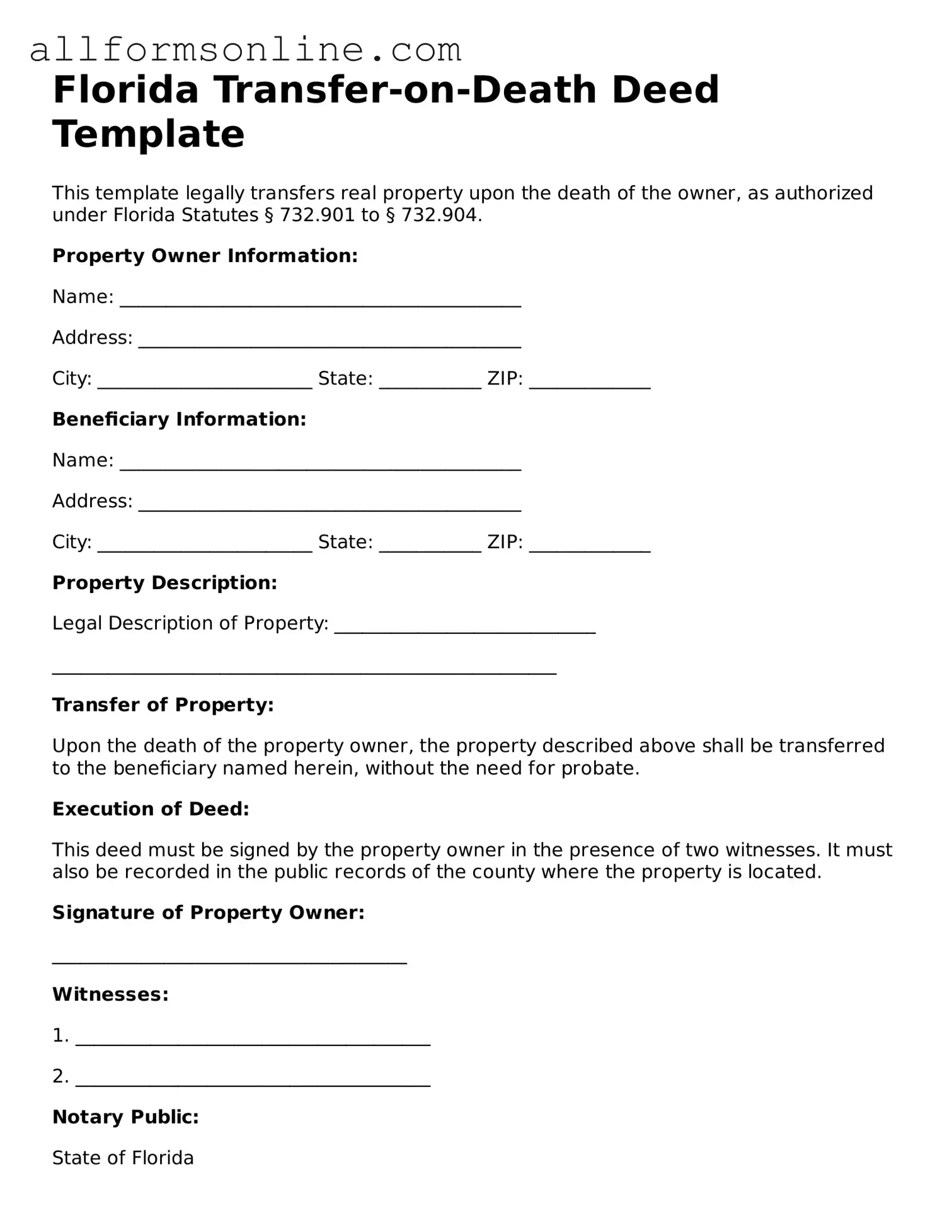What is a Transfer-on-Death Deed in Florida?
A Transfer-on-Death Deed (TODD) is a legal document that allows a property owner to transfer their real estate to a designated beneficiary upon their death. This deed bypasses the probate process, making it a straightforward option for transferring property to heirs without the complexities typically associated with estate administration.
Who can use a Transfer-on-Death Deed in Florida?
Any individual who owns real property in Florida can use a Transfer-on-Death Deed. This includes homeowners, property investors, and anyone holding title to real estate. However, it is essential that the property is not subject to any liens or encumbrances that would complicate the transfer.
How does a Transfer-on-Death Deed work?
The property owner fills out the TODD form, naming one or more beneficiaries. After the owner’s death, the property automatically transfers to the beneficiaries without going through probate. The deed must be properly recorded in the county where the property is located to be effective.
Are there any limitations on who can be named as a beneficiary?
Yes, beneficiaries must be individuals or certain types of entities, such as trusts. You cannot name an estate, corporation, or partnership as a beneficiary. Additionally, if a beneficiary predeceases the property owner, their share may pass to their heirs or may be redistributed among the remaining beneficiaries, depending on how the deed is structured.
Can a Transfer-on-Death Deed be revoked or changed?
Yes, the property owner can revoke or change the TODD at any time before their death. This can be done by executing a new deed or a revocation form, which must also be recorded in the appropriate county office to be effective.
What are the tax implications of a Transfer-on-Death Deed?
Generally, property transferred via a TODD does not trigger immediate tax consequences. The property retains its tax basis, which means that the beneficiaries may benefit from a step-up in basis upon the owner's death. However, it is advisable to consult a tax professional to understand any potential tax implications fully.
Is a Transfer-on-Death Deed the right choice for everyone?
A Transfer-on-Death Deed may not be suitable for everyone. Individuals with complex estates, multiple properties, or those wishing to impose conditions on property transfer may benefit from other estate planning tools. Consulting with an estate planning attorney can help determine the best approach for your situation.
What happens if there are multiple beneficiaries named in the deed?
If multiple beneficiaries are named, the property will be divided among them according to the terms specified in the deed. If no specific division is mentioned, the property may be divided equally. Beneficiaries may need to agree on how to manage or sell the property after the transfer.
Where can I obtain a Transfer-on-Death Deed form?
Transfer-on-Death Deed forms are available through various sources, including online legal services, local county offices, and estate planning attorneys. It is important to use the correct form for Florida and ensure that it complies with state laws.
Is legal assistance necessary to complete a Transfer-on-Death Deed?
While it is possible to complete a Transfer-on-Death Deed without legal assistance, it is recommended to consult with an attorney. An attorney can help ensure that the deed is filled out correctly, complies with state laws, and meets your specific needs and circumstances.
